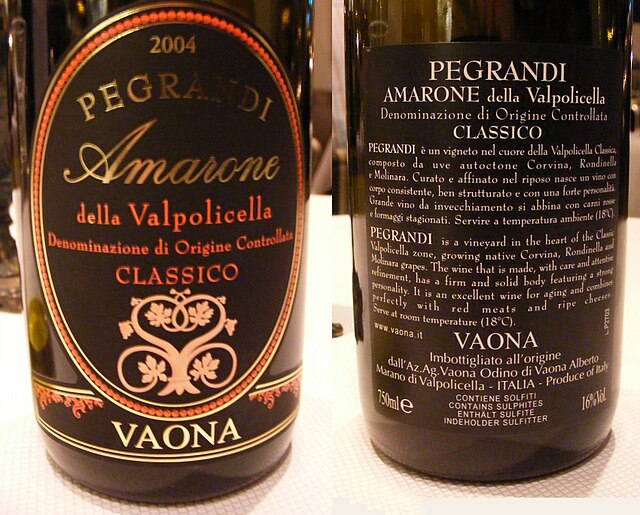Denominazione di origine controllata
The following four classifications of wine constitute the Italian system of labelling and legally protecting Italian wine:Denominazione di origine ;
Indicazione geografica tipica ;
Denominazione di origine controllata ; and
Denominazione di origine controllata e garantita.
Labels of the Italian wine Amarone della Valpolicella Classico 2004 from the Pegrandi vineyard produced by Vaona. The label indicates that this is a DOC class wine from the Classico region of Valpolicella.
A paper strip denoting DOCG on a bottle of 2012 Barbera d'Asti
Italian wine is produced in every region of Italy. Italy is the world's largest wine producer, as well as the country with the widest variety of indigenous grapevine in the world, with an area of 702,000 hectares under vineyard cultivation, and contributing a 2013–2017 annual average of 48.3 million hl of wine. In 2018 Italy accounted for 19 per cent of global production, ahead of France and Spain. Italian wine is both exported around the world and popular domestically among Italians, who consume an average of 42 litres per capita, ranking fifth in world wine consumption.
Tuscan Chianti in a traditional fiasco
Vineyards in Langhe and Montferrat, Piedmont, the official name of a UNESCO World Heritage Site comprising "five distinct wine-growing areas with outstanding landscapes" and the Castle of Grinzane Cavour in the region of Piedmont, Italy
A typical Italian vineyard scene, with vines growing alongside olive trees
DOCG and DOC labels on two Italian wine bottles






